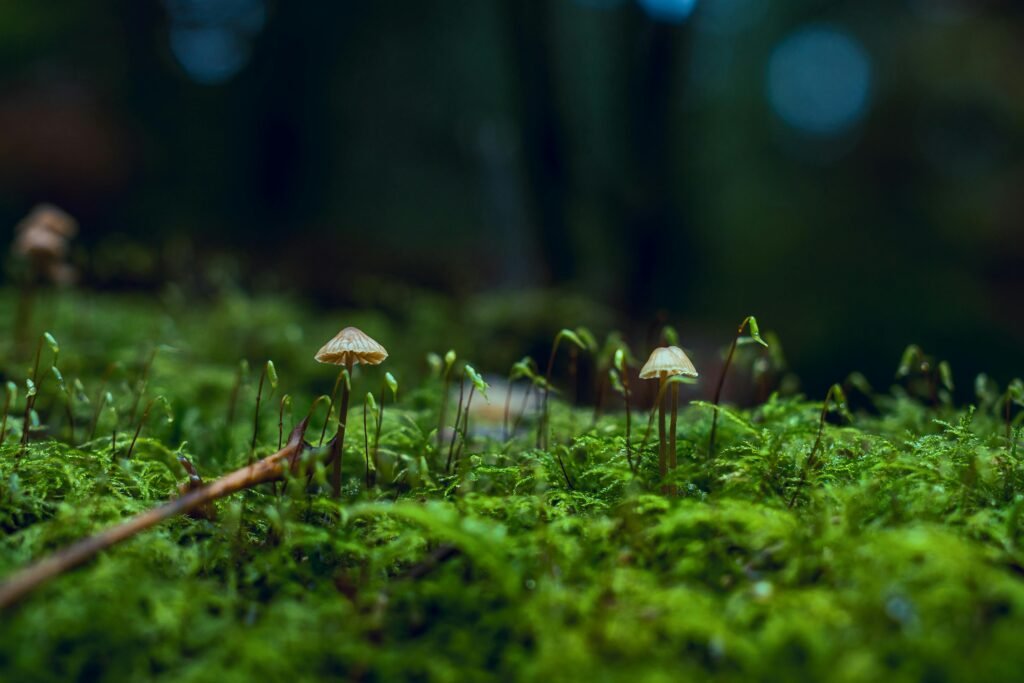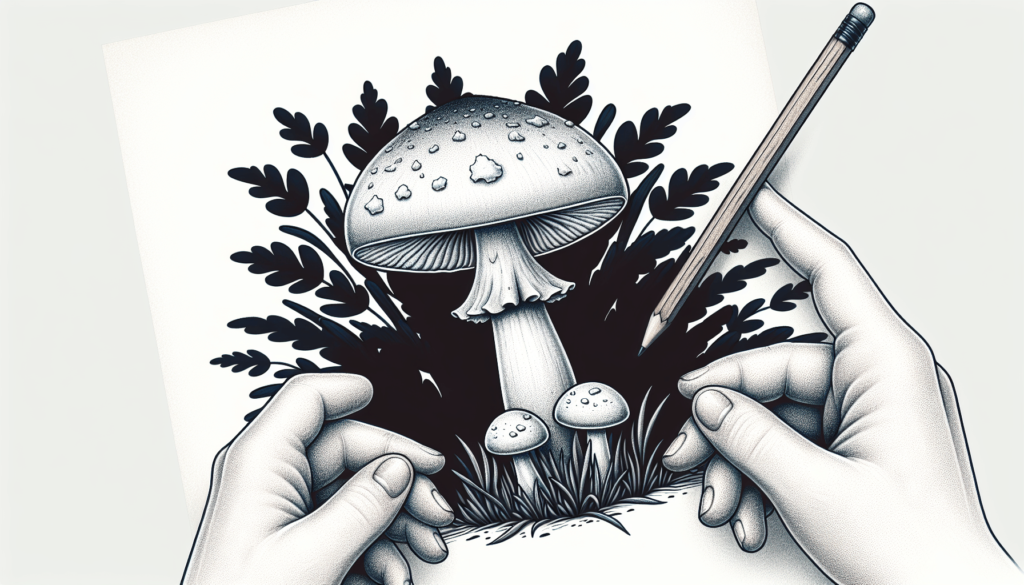Did you know that the death cap mushroom, scientifically known as Amanita phalloides, is one of the most poisonous mushrooms in the world? Packed with toxins that are harmful to the liver, just a few bites of this seemingly innocent fungi can have fatal consequences. Commonly mistaken for edible mushrooms, the death cap mushroom poses a serious risk to those who unknowingly consume it. In this article, we will explore the dangers associated with this deadly mushroom and highlight the importance of mushroom identification to ensure a safe and enjoyable foray into the world of fungi.

Introduction
Welcome to this comprehensive article on the death cap mushroom! In this friendly guide, we will explore the physical appearance, habitat, toxicity, fatalities, prevention, treatment, regulation, educational initiatives, and similar poisonous mushrooms associated with the death cap. By the end of this article, you will have a thorough understanding of the dangers posed by this deadly fungus and how to protect yourself and others.
Description of Death Cap Mushroom
Physical Appearance
The death cap mushroom (Amanita phalloides) is an elegant yet treacherous organism. This deadly fungus typically ranges in size from 5 to 15 centimeters in height, featuring a pale to olive-green cap. The cap can also exhibit a slight yellow or whitish tinge and often displays a distinctive, shimmering appearance. Beneath the cap, you will find white gills that darken with age and a slender stalk, often adorned with a ring.
Habitat and Distribution
Native to Europe, the death cap mushroom has now spread to various regions across the globe. It thrives in temperate climates, often found in association with oak, chestnut, and beech trees. These mushrooms prefer to grow in well-watered areas, such as forests, meadows, and parks. It is important to note that death cap mushrooms can also be inadvertently introduced to new areas through the transplantation of infected trees.
Toxicity of Death Cap Mushroom
Presence of Deadly Toxins
The death cap mushroom is notorious for containing lethal toxins. Its toxic arsenal primarily includes α-amanitin, β-amanitin, and γ-amanitin, which are cyclic peptides responsible for the severe effects observed in poisoning cases. These toxins are highly resilient, resisting degradation by heat, cooking, and drying. Even consuming a small portion of the death cap can lead to life-threatening consequences.
Mechanism of Toxicity
The toxicity of the death cap mushroom stems from the impact of its amatoxins on human cells. Once ingested, the amatoxins target the RNA polymerase II enzyme, halting the production of key proteins necessary for cell function. This disruption ultimately leads to liver and kidney damage, which can progress rapidly if not treated promptly. The delayed onset of symptoms further complicates the timely intervention required for survival.
Symptoms and Effects of Poisoning
Poisoning caused by the death cap mushroom is a harrowing experience. In the initial stages, victims often suffer from gastrointestinal distress, including vomiting, diarrhea, and abdominal pain. However, these symptoms may temporarily improve, giving a false sense of relief. Tragically, a second phase follows, wherein liver and kidney failure ensue. Jaundice, seizures, delirium, and even coma can manifest, leaving those affected in a critical condition.
Fatalities and Poisoning Cases
Historical Incidents
The death cap mushroom has established a somber reputation throughout history due to its deadly nature. In Europe, where it is more prevalent, historical incidents of poisoning have been recorded for centuries. Particularly notable is the case of Holy Roman Emperor Charles VI in 1740, who fell victim to the death cap while mistakenly consuming it. Tragically, this incident resulted in his untimely demise.
Recent Case Studies
Regrettably, death cap mushroom poisoning is not a relic of the past. Recent case studies demonstrate the ongoing threat posed by this deadly fungus. For example, in 2012, a family in California mistakenly gathered and consumed death caps, leading to life-threatening poisoning and requiring liver transplantation for their recovery. These incidents underscore the critical importance of prevention and awareness.

Preventing Mushroom Poisoning
Avoiding Wild Mushroom Consumption
The most effective way to prevent death cap mushroom poisoning is to refrain from consuming wild mushrooms unless you are an expert mycologist. It is remarkably challenging for even experienced foragers to accurately identify mushrooms in the wild, as the distinction between edible and poisonous species can be subtle. To prioritize safety, it is strongly recommended to only consume mushrooms purchased from trusted sources.
Educating the Public
Public education plays a pivotal role in reducing the number of death cap mushroom poisoning cases. Governments, healthcare organizations, and environmental agencies must collaborate to raise awareness about the dangers of wild mushroom consumption. Initiatives such as producing informative literature, organizing workshops, and disseminating warnings through media channels can significantly contribute to reducing the risk of accidental ingestion.
Treatment for Death Cap Mushroom Poisoning
Immediate Action
If you suspect you or someone you know has consumed a death cap mushroom, immediate action is critical. Do not induce vomiting, as this can exacerbate the situation. Instead, promptly seek medical attention. While en route to the hospital, if possible, take a clear photograph or bring a sample of the mushroom for accurate identification, which can aid medical professionals in determining the best course of action.
Medical Interventions
Hospital admission is essential for the treatment of death cap mushroom poisoning. Physicians will employ various measures to address the life-threatening effects of the toxins. Treatment may involve intravenous fluids to maintain hydration, administration of medication to counteract the effects of the amatoxins, and potentially liver transplantation if significant organ damage occurs. Timely intervention significantly increases the chances of survival.

Efforts in Mushroom Regulation
Mushroom Identification and Safety Guidelines
To mitigate the risks associated with death cap mushrooms and other toxic fungi, mushroom identification and safety guidelines have been developed. These guidelines help establish clear criteria for differentiating edible mushrooms from their toxic counterparts, emphasizing key distinguishing features. By promoting accurate identification and responsible mushroom foraging practices, these guidelines aim to minimize instances of poisoning.
Legislation and Regulation
In addition to safety guidelines, legislation and regulation play a vital role in protecting individuals from death cap mushroom poisoning. Governments worldwide have implemented measures to control the gathering, distribution, and sale of wild mushrooms. These regulations often include licensing requirements for commercial mushroom pickers and periodic inspections of market vendors, ensuring public safety while maintaining the right balance with the preservation of traditional practices.
Educational Initiatives
Public Awareness Campaigns
Public awareness campaigns serve as influential tools to inform communities about the dangers of death cap mushrooms. By leveraging various platforms such as social media, television, and radio, these campaigns reach a wide audience, disseminating vital information on proper mushroom identification, safe consumption practices, and the potential consequences of ingestion. Continuous efforts to raise awareness are crucial in minimizing the occurrence of poisoning cases.
Training for Mushroom Hunters
Addressing the need for accurate identification skills, specialized training programs for mushroom hunters have been established. These programs equip enthusiasts with the knowledge and skills required to differentiate between edible and poisonous mushrooms. Participants learn about crucial identification features, habitat awareness, and safe collection techniques. By empowering individuals with the necessary expertise, these training initiatives promote responsible foraging practices and reduce risks.

Similar Poisonous Mushrooms
Amanita phalloides Variants
Within the Amanita genus, variants of Amanita phalloides have been identified that share the same lethal amatoxins. Species such as Amanita verna and Amanita virosa closely resemble the death cap mushroom, making them equally dangerous. The subtlety of their differences presents a challenge for accurate identification, further underscoring the need for caution when foraging for wild mushrooms.
Other Toxic Mushroom Species
Apart from the Amanita genus, various other mushroom species possess toxic properties. The destroying angel (Amanita bisporigera), fool’s mushroom (Amanita gemmata), and the deadly galerina (Galerina marginata) are just a few examples. These mushrooms often share similar habitats as the death cap and have caused significant harm in past incidents. It is crucial to exercise caution and consult experts when exploring the world of wild mushroom foraging.
Conclusion
In conclusion, the death cap mushroom poses a significant threat due to its deadly toxins and resemblance to edible mushrooms. With historical incidents, recent case studies, and ongoing fatalities, it is clear that prevention, regulation, and education are essential in combatting the dangers it presents. By avoiding wild mushroom consumption, educating the public, implementing safety guidelines, and promoting responsible foraging practices, we can strive towards a future where fatalities caused by the death cap mushroom are eliminated. Stay informed, stay safe, and enjoy the wonders of the natural world responsibly.

